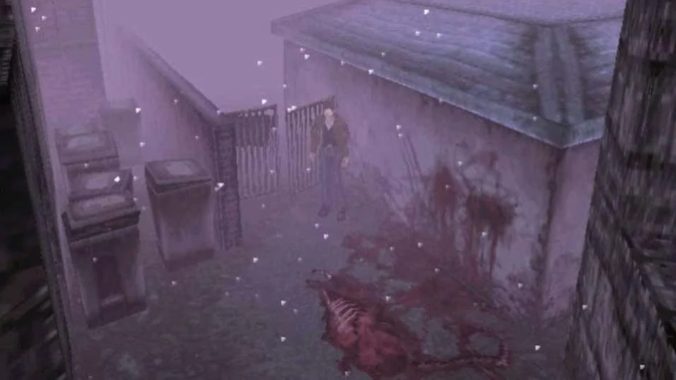There’s a Reason Why Horror Games Can’t Forget Silent Hill After 25 Years

Out of the countless indie ecosystems that have flourished since game distribution went digital, one of my favorites is the lo-fi horror scene, a space that channels the pixelated nightmares of a bygone era. While this movement is diverse, many of these titles specifically build on PSX aesthetics because they understand that while this particular look was often motivated by technical limitations, the ambiguity this style utilizes can still be deeply unsettling – defined enough to offer the vague shape of terrors, but abstract in a way that makes the player complicit in dreaming up their spine-tingling details.
However, the best of these don’t only emulate the visual sensibilities of the time with chunky polygonal graphics and low-res textures but also the pioneering spirit of early 3D console games. Itch.io is a haven for these weirdo projects, from the aptly named Haunted PS1 Demo Discs, which contain a wide selection of curiosities, to Kitty Horrorshow’s oeuvre, including Anatomy, a uniquely upsetting look at how scary homes can be. On Steam, there have been breakout successes like Iron Lung, an oppressive experience about piloting a submarine being crushed by an ocean of blood, or Signalis, a survival horror game with such unforgettable presentation that a significant cluster of my neurons are now dedicated to obsessing over it.
There’s also Paratopic, How Fish is Made, Fatum Betula, Dread Delusion, and numerous other strange creations, which have innovated on this seemingly hyper-specific slice of gaming history, interrogating a particular genre as it was over the span of a few years. Across many of these works, one game from the PS1 era is almost always close at hand, mentioned in developer interviews, alluded to on store pages, referenced in design structure, audio landscapes, and sometimes even narrative subject matter. Of course, I’m referring to Silent Hill.
While viewed as singular now, when it was originally released in 1999, Team Silent’s debut was immediately and routinely framed in relation to Resident Evil. Virtually every review at the time mentioned Capcom’s series, which had codified the conventions of survival horror and spawned a wave of copycats. But despite Silent Hill’s resemblance to the mega-hit, with its tank controls, inventory scarcity, and occasional fixed camera angles, most critics also noted that something was different here. In her review for IGN, Francesca Reyes described how instead of mimicking Resident Evil by having players “blast their way through a zombie-filled town with a super grenade-launcher,” it took a decidedly more “cerebral approach to the horror genre.”
Years later, having played through the games that followed in Silent Hill’s footsteps, including its direct sequel, there’s still a unique resonance here, a grimy, nasty, idiosyncratic harmony found in its look and tone, which makes its scares still connect as well as they did decades ago. “The fear of blood tends to create fear for the flesh,” its first words read, as warbling strings serenade an intro that plays like a feverish, garbled soap opera, full of sights that only make sense after poring over every stray plot thread in an attempt to piece together what it all meant. This sequence keys us into its sensibilities, a mishmash of influences, most obviously Twin Peaks, going in a decidedly more avant-garde direction than many of its peers at the time.
But an even more succinct vertical slice of what the game is doing comes minutes later as Harry Mason, the everyman protagonist, stumbles down an alley in search of his seven-year-old daughter Cheryl. There, you’re greeted by the first explicit acknowledgment that something is very wrong in this place: a pile of viscera that is difficult to identify due to the combination of low poly graphics and uncertainty about what this heap of meat was made from. Still, you press on. While the fixed camera angles initially feel cold and calm, as you go deeper, these shots lurch with each step, as queasy, voyeuristic cinematography imparts the feeling you’re being watched by something horrible.
Then, a siren wails, gray fog giving way to pitch-black as the world inexplicably changes. “That’s strange, it’s getting darker,” Harry milquetoastly states, his naivety contrasted against encroaching terror. You can’t see anything beyond the dim glow of your match, the camera continues to tilt, a rusty wheelchair squeaks, there’s a bloody body in a stretcher. For the first time, the soundtrack shows its true colors, an uneven, violent, metallic clang rising in concert with your own crescendoing dread. It builds, and there are more layers of noise, and the camera is completely off-axis. Chain-link fences are drenched in blood. At the end of the trail, you see a body. It’s wrapped in bandages and mangled, and the details are both apparent and obscured. Harry gives the most wooden line delivery imaginable about the grisly sight, his awkward words and inflection only adding to the surreal din.